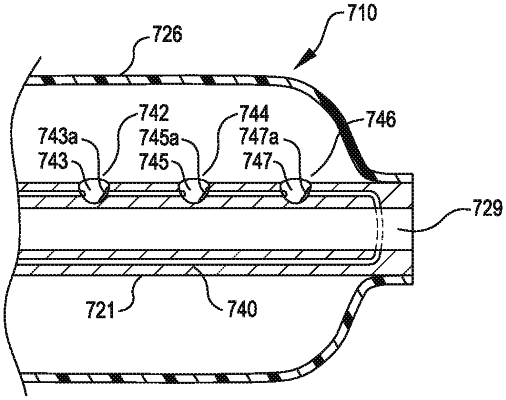| CPC A61B 18/1492 (2013.01) [A61B 17/22022 (2013.01); A61B 18/00 (2013.01); A61B 17/2202 (2013.01); A61B 17/22029 (2013.01); A61B 17/2251 (2013.01); A61B 17/320725 (2013.01); A61B 2017/22024 (2013.01); A61B 2017/22025 (2013.01); A61B 2017/22051 (2013.01); A61B 2017/22058 (2013.01); A61B 2017/22061 (2013.01); A61B 2017/22062 (2013.01); A61B 2017/22098 (2013.01)] | 15 Claims |

|
1. A device for generating shock waves for treating a calcified lesion within a blood vessel or a calcified aortic valve comprising:
an elongated support;
a chamber mounted on the elongated support, said chamber being fillable with a conductive liquid; and
a conductor that extends towards a distal end of the elongated support and then back towards a proximal end of the elongated support, the conductor being surrounded by insulative material, the conductor comprising a plurality of conductor segments, there being at least two locations along the length of the conductor where the insulative material does not surround the conductor and where respective conductor segments are spaced apart in a longitudinal direction such that opposed ends of respective conductor segments are exposed to the conductive liquid within the chamber, each location defining an electrode pair having a gap between the opposed ends of the respective conductor segments and wherein the gaps of the electrode pairs are connected in series, with the electrode pairs being arranged such that when a sufficiently high voltage pulse is applied to the proximal ends of the conductor, arcs are generated in the conductive liquid adjacent each electrode pair thereby creating a low impedance current path across the gaps of the electrode pairs whereby the current will flow in a series path, with a shock wave being generated from each electrode pair.
|